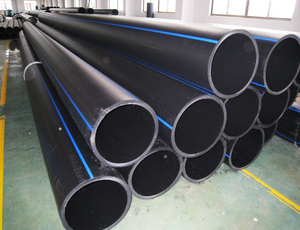Dec . 25, 2024 10:14 Back to list
ppr pipes product
The Benefits and Versatility of PPR Pipes
PPR (Polypropylene Random Copolymer) pipes have emerged as a favored choice in various industries due to their numerous advantages and versatile applications. Known for their durability, chemical resistance, and thermal insulation properties, PPR pipes are quickly becoming a standard material for plumbing systems, heating installations, and more. This article will explore the characteristics, benefits, and widespread use of PPR pipes, highlighting their importance in modern infrastructure.
What is PPR?
PPR pipes are made from polypropylene, a type of thermoplastic polymer. The random copolymer aspect refers to the way the polymer chains are arranged, which enhances the material's flexibility and strength. PPR pipes are lightweight and have a smooth interior surface, reducing friction and promoting efficient flow, making them ideal for various fluid transportation applications.
Key Benefits of PPR Pipes
1. Durability One of the standout features of PPR pipes is their long service life. They can withstand high pressures and temperatures, making them suitable for hot and cold water systems. PPR pipes are resistant to corrosion, rust, and scale buildup, which contributes to their longevity and reliability in diverse environments.
2. Chemical Resistance PPR pipes exhibit excellent resistance to a wide range of chemicals, including acids, bases, and salts. This property makes them ideal for industrial applications where chemical exposure is common, ensuring that the integrity of the piping system remains intact over time.
3. Thermal Insulation The thermal conductivity of PPR pipes is relatively low, which means they can maintain the temperature of the liquids transported within them. This characteristic is especially useful in hot water plumbing systems, as it reduces heat loss and improves energy efficiency.
4. Ease of Installation PPR pipes are incredibly lightweight compared to traditional materials such as metal. Their low weight makes transportation and handling easier, leading to reduced labor costs during installation. Additionally, the most common method of joining PPR pipes is through the heat fusion process, which creates a seamless bond, minimizing the risk of leaks.
ppr pipes product

5. Cost-Effectiveness While the initial investment in PPR pipes may be higher than some alternatives, their durability and low maintenance requirements result in long-term savings. The reduction in replacement and repair costs, coupled with energy efficiency, makes PPR an economically viable choice.
Applications of PPR Pipes
PPR pipes find extensive application across various sectors due to their versatile characteristics. Here are some common uses
- Plumbing Systems PPR pipes are widely used in residential and commercial plumbing systems for potable water supply and drainage. Their resistance to bacteria and low leaching properties make them a safe choice for drinking water.
- Heating Systems In underfloor heating and central heating systems, PPR pipes provide an excellent solution for transporting hot water while maintaining thermal efficiency.
- Industrial Applications Industries that handle corrosive substances, such as chemicals and pharmaceuticals, often utilize PPR pipes to ensure safe and reliable fluid transfer.
- Irrigation Systems The agricultural sector benefits from the reliable performance of PPR pipes in irrigation systems, ensuring effective water distribution to crops.
Conclusion
In conclusion, the use of PPR pipes continues to grow due to their impressive range of benefits, including durability, chemical resistance, and thermal insulation. Their versatility allows them to be utilized in various applications, from plumbing and heating systems to industrial and agricultural uses. As industries continue to seek reliable and efficient materials, PPR pipes are likely to cement their place as a preferred choice in modern infrastructure development. Embracing this innovative solution can lead to improved efficiency, lower costs, and sustainable practices across multiple sectors.
-
High-Quality PVC Borehole Pipes Durable & Versatile Pipe Solutions
NewsJul.08,2025
-
High-Quality PVC Perforated Pipes for Efficient Drainage Leading Manufacturers & Factories
NewsJul.08,2025
-
High-Quality PVC Borehole Pipes Durable Pipe Solutions by Leading Manufacturer
NewsJul.08,2025
-
High-Quality PVC Borehole Pipes Reliable PVC Pipe Manufacturer Solutions
NewsJul.07,2025
-
High-Quality UPVC Drain Pipes Durable HDPE & Drain Pipe Solutions
NewsJul.07,2025
-
High-Quality Conduit Pipes & HDPE Conduit Fittings Manufacturer Reliable Factory Supply
NewsJul.06,2025

